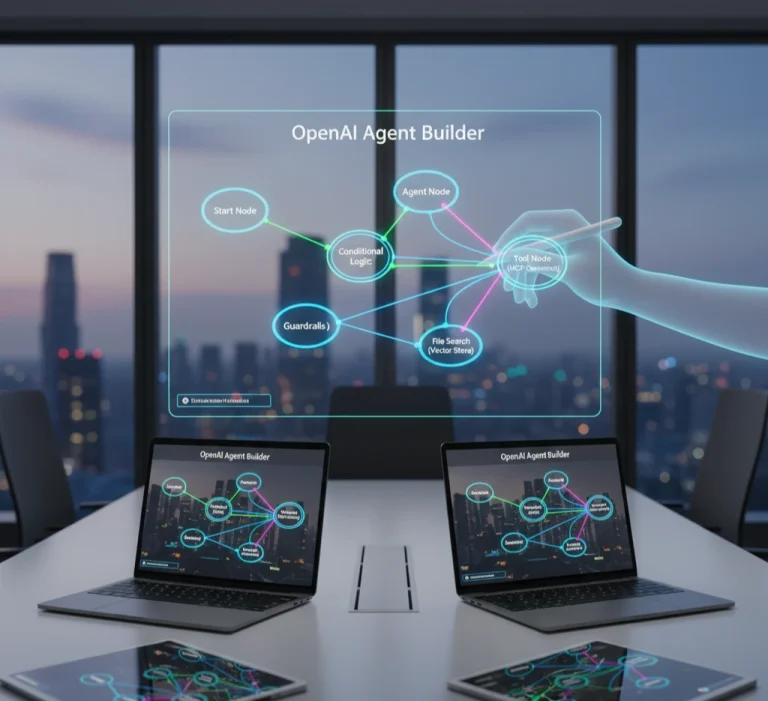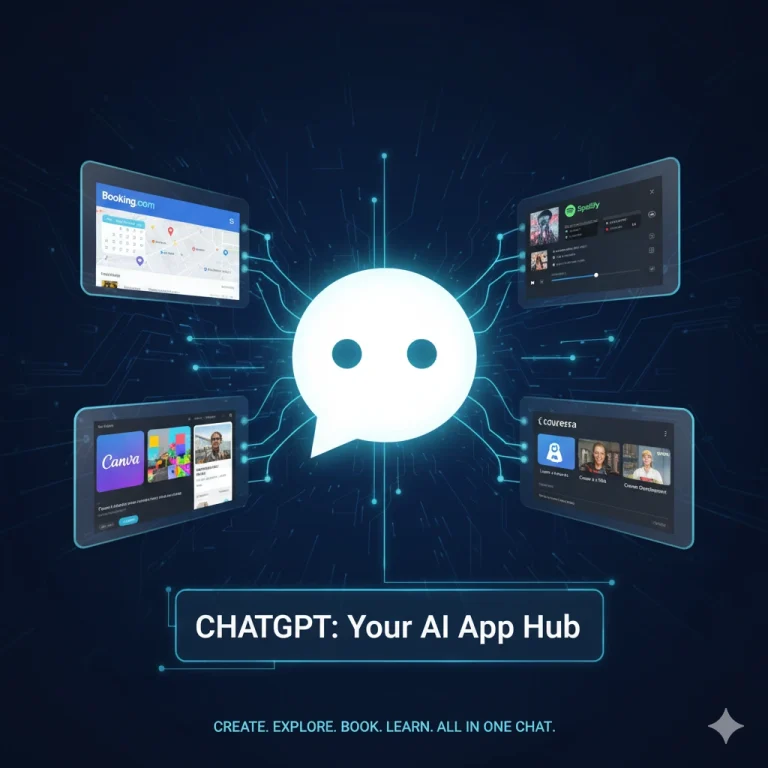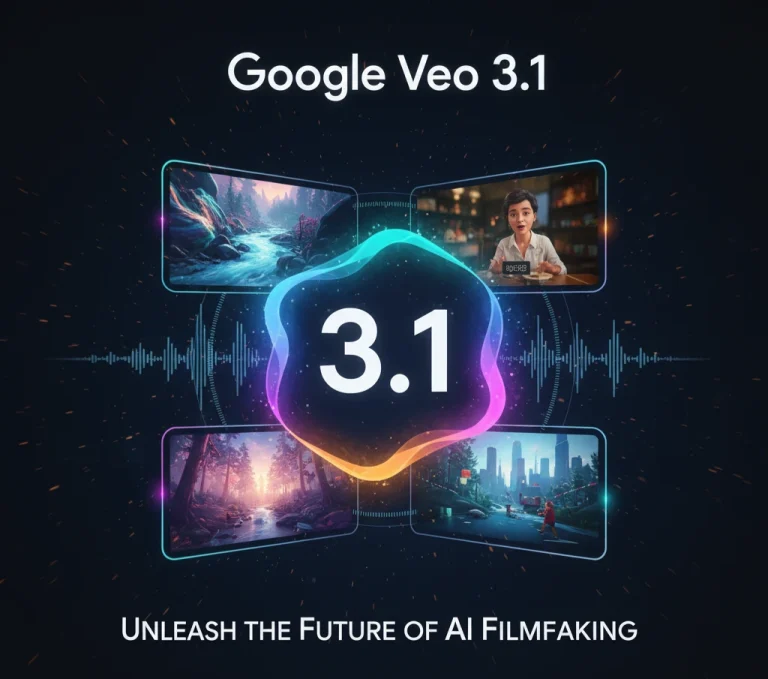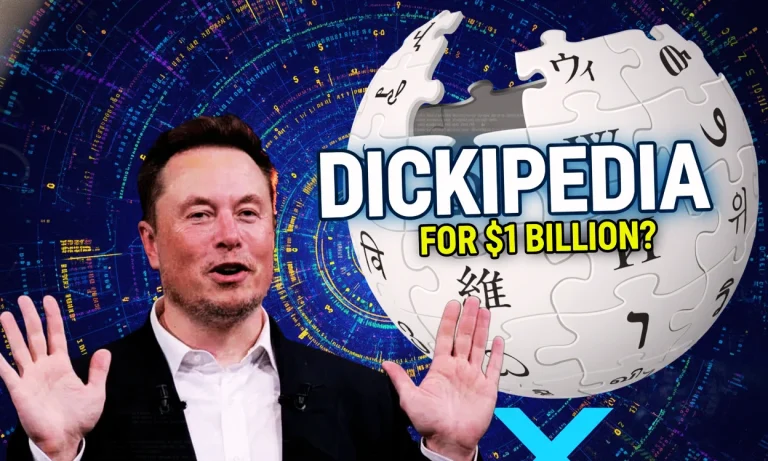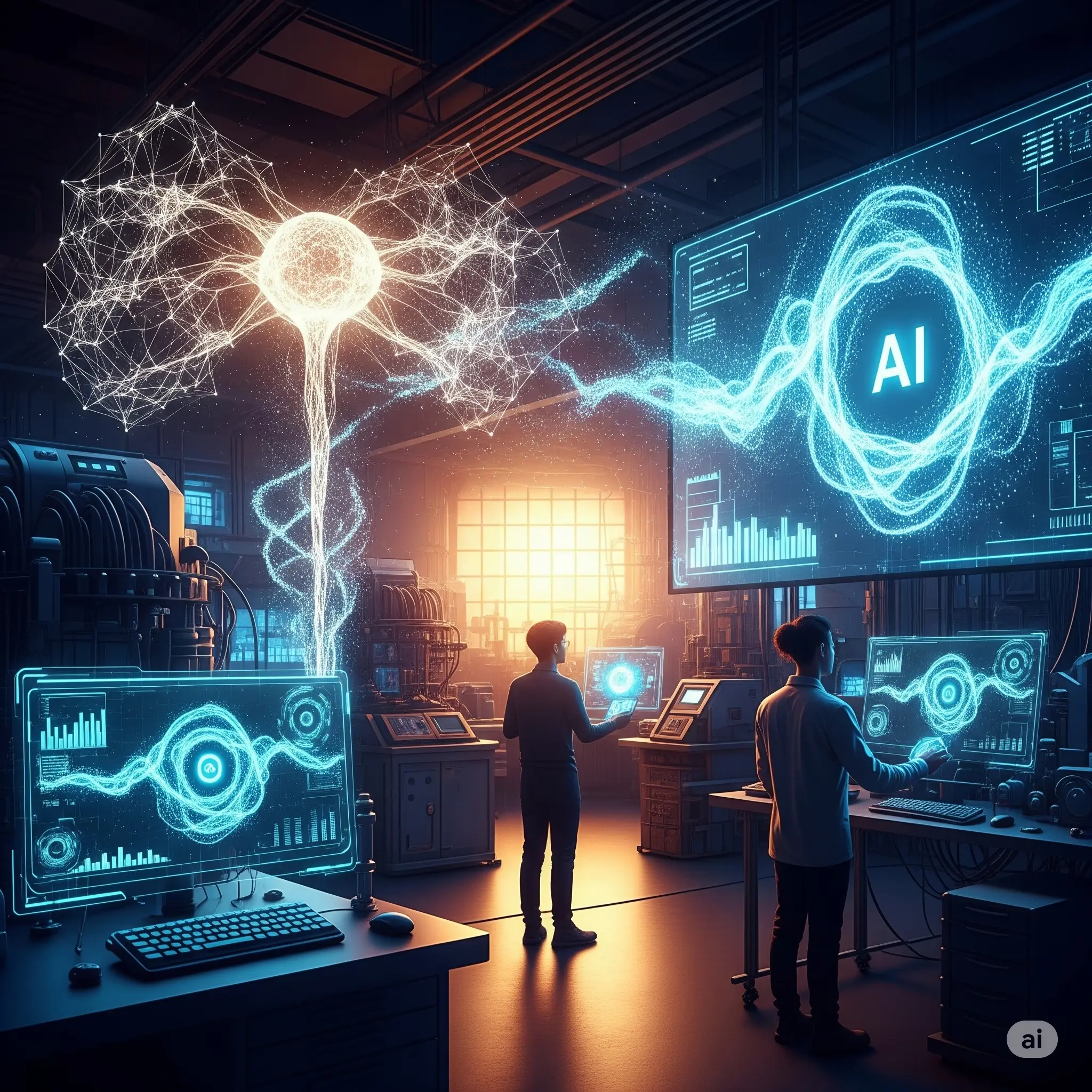
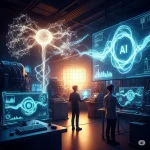
Generative AI in 2025 is transforming the way we work, create, and innovate. It’s no longer just a futuristic idea; it’s powering real change in industries worldwide.
Generative AI is changing the game for businesses. Tools like DALL·E create amazing images, and ChatGPT writes content quickly and smartly. From marketing to healthcare and tech, AI is making work faster, more creative, and more personalised. It’s quickly becoming the new normal.
In this blog, we break down what generative AI really is, how it’s different from traditional AI, its top use cases, benefits, potential risks, and the trends to watch in the near future.
What is Generative AI?
Generative AI is a type of artificial intelligence that creates original content like text, images, videos, code, and music. It uses machine learning models trained on large datasets to generate new outputs based on learned patterns.
Popular tools like ChatGPT (for text) and DALL·E (for images) are examples. Unlike traditional AI that only analyses data, generative AI produces fresh content that often feels human-like and creative.
How It Differs from Traditional AI
Understanding the distinction between generative AI and traditional AI is crucial. While both fall under the umbrella of artificial intelligence, their primary functions and capabilities diverge significantly:
Traditional AI (Discriminative AI): This type of AI is designed to analyze and classify existing data. Its primary goal is to make predictions or identify patterns.
- Examples: Image recognition (identifying a cat in a photo), spam detection (classifying an email as spam or not), recommendation systems (suggesting products based on past purchases).
- Methodology: Often relies on predefined rules, statistical models, or supervised learning to discern patterns and make decisions based on inputs.
Generative AI: This AI focuses on creating new content that didn’t exist before.
- Examples: Writing an article, composing a song, designing a new product concept, generating a realistic image from a text description.
- Methodology: Employs complex algorithms (like GANs or Transformers) to learn the underlying distribution of data and then generate new data samples that mimic that distribution.
In essence, if traditional AI is about understanding and predicting from data, generative AI is about imagination and creation. This fundamental difference unlocks a new realm of AI innovation and possibilities across industries.
Top Use Cases Across Industries in 2025
Generative AI is rapidly being adopted across diverse sectors, proving its versatility and transformative power. Here are some key generative AI use cases dominating in 2025:
- Marketing & Content Creation: From personalized ad copy and social media posts to entire blog articles and video scripts, AI-generated content is streamlining workflows for marketers. Tools like ChatGPT are used for brainstorming, drafting, and even localizing content at scale.
- Product Design & Development: Companies are leveraging generative AI to accelerate design cycles, create innovative prototypes, and simulate product performance. AI can design clothing lines based on consumer trends in fashion. In manufacturing, it optimises components for strength and weight.
- Software Development: It assists developers in writing code, debugging, and even generating entire functions from natural language prompts, accelerating the development lifecycle. Tools like GitHub Copilot are prime examples of this.
- Healthcare & Life Sciences: It is revolutionizing drug discovery by simulating molecular interactions, designing new proteins, and creating personalized treatment plans based on patient data. It also aids in generating synthetic medical images for training AI models, enhancing diagnostics.
- Customer Service: Advanced AI chatbots powered by LLMs can provide more nuanced, human-like responses to customer inquiries, resolve complex issues, and offer personalized support 24/7.
- Finance: In finance, It is used for sophisticated fraud detection by identifying anomalous transaction patterns, optimizing portfolio management, and generating market analysis reports.
Benefits and Risks of Generative AI
The widespread adoption of generative AI comes with significant advantages, but also necessitates careful consideration of its potential risks.
Benefits:
- Increased Productivity & Efficiency: Automates repetitive tasks, freeing up human resources for more strategic and creative work.
- Enhanced Creativity & Innovation: Generates novel ideas, designs, and content that might not have been conceived by humans alone, fostering breakthrough innovation.
- Personalization at Scale: Enables hyper-personalized experiences, content, and product recommendations tailored to individual user preferences.
- Cost Reduction & Time Savings: Streamlines workflows, reduces the need for manual labor in certain areas, and accelerates development cycles.
- Improved Data Analysis & Insights: Can analyze vast datasets to uncover patterns and generate insights, leading to more data-driven decision-making.
Risks:
- Misinformation & Deepfakes: The ability to generate highly realistic fake images, videos, and audio (deepfakes) poses significant risks for misinformation, propaganda, and impersonation.
- Bias & Fairness: If trained on biased data, generative AI models can perpetuate and even amplify societal biases, leading to discriminatory or unfair outputs.
- Copyright & Intellectual Property: Questions around the ownership of AI-generated content and potential copyright infringement (if models are trained on copyrighted material without permission) are major legal and ethical challenges.
- Security & Data Privacy: Risks include data leakage from training data, potential for AI model poisoning by malicious actors, and the privacy of user inputs when interacting with AI systems.
- Job Displacement: While creating new roles, the automation capabilities of generative AI may lead to job displacement in certain sectors, requiring workforce reskilling and adaptation.
- Hallucinations: Generative AI models can sometimes produce factually incorrect but confidently stated information, known as “hallucinations,” necessitating human oversight for accuracy.
Understanding the strength & weakness of generative AI is essential for using it effectively in content creation, design, and decision-making.
Future Trends and Predictions for Generative AI in 2025
The trajectory of generative AI indicates an exciting, yet complex, future. Here are some key trends and predictions for 2025 and beyond:
Multimodal AI Expansion: Expect to see more sophisticated generative AI models capable of seamlessly understanding and generating content across multiple modalities, including text, image, audio, and video, in a single interaction.
Hyper-Personalization and Customization: It will enable even more precise and dynamic personalization of products, services, and digital experiences, tailoring offerings down to the individual level.
Rise of AI Agents: More autonomous AI agents will emerge, capable of completing complex tasks by chaining together multiple actions and interacting with various tools and platforms without constant human intervention.
Improved Explainability (XAI) and Ethics: Increased focus on developing generative AI models that are more transparent, interpretable, and align with ethical guidelines, addressing concerns around bias and accountability.
Integration into Everyday Tools: Generative AI capabilities will become seamlessly embedded into common software applications (e.g., Microsoft Office, Google Workspace, design software), making it an indispensable part of daily work for millions.
Expansion into New Industries: Expect to see generative AI make significant inroads into sectors like education, specialized manufacturing, entertainment (beyond basic content), and sustainable development.
Conclusion
Generative AI in 2025 is driving major transformation across industries. It boosts creativity, improves efficiency, and enables deep personalization. Tools like ChatGPT and DALL·E are enhancing content creation. Simultaneously, AI is revolutionizing both product design and customer service. However, despite its immense power, risks like misinformation and ethical issues must be carefully managed. Responsible use is essential.
The benefits of generative AI are clear. Businesses that adopt it wisely with human oversight can lead innovation. Those who act ethically and strategically will gain a strong competitive edge in this new AI-powered era. Content creators are leveraging generative AI like never before. Dive deeper into how this technology empowers them!
FAQs
Find answers to common questions below.
How will AI change our everyday lives?
Generative AI will make daily life more personalized, from tailored online experiences to smarter home devices and new ways to learn, making many interactions more intuitive and efficient.
Will AI take my job?
While some routine tasks will be automated, Generative AI is more likely to create new jobs and make human work more efficient and creative, shifting focus to higher-value skills.
What are the biggest risks of advanced AI like deepfakes?
The main risks include widespread misinformation from realistic "deepfakes," biases in AI outputs, challenges with copyright, and privacy concerns as AI becomes more powerful.
Can AI truly be creative, or just copy?
Generative AI goes beyond copying; it learns patterns to create genuinely new ideas, designs, and content. It's a form of computational creativity that enables real innovation.
Are governments regulating Generative AI?
Yes, governments and international bodies are actively working on regulations for Generative AI, focusing on ethics, transparency, and balancing innovation with safety to manage its widespread impact.

